Business
Top 10 Most Website Builders That Doesn’t Suck
Published
5 years agoon
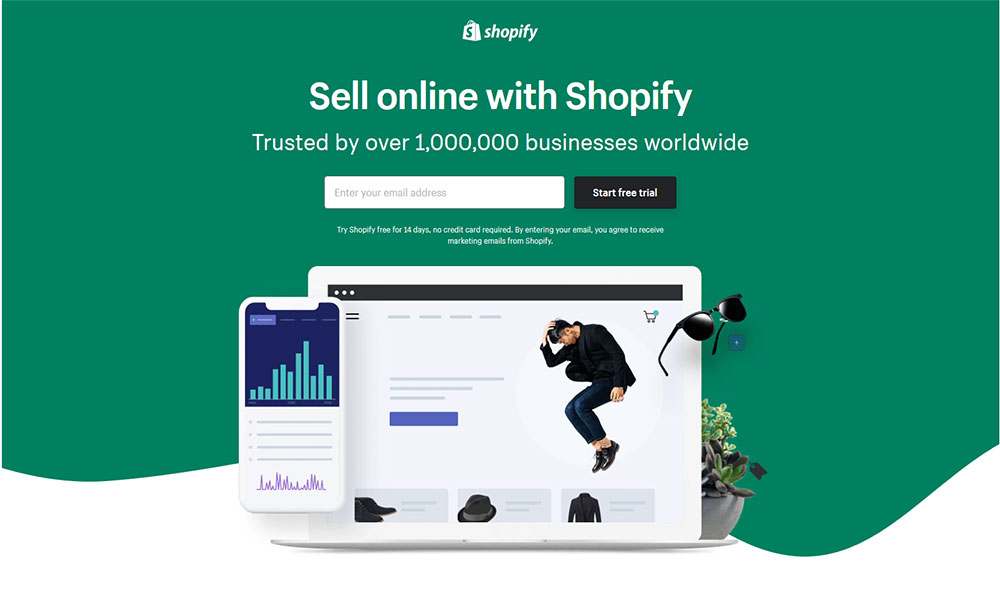
Create your own pages with the best website builders. There are hundreds to choose from but we’ve already selected the top 10 for you.
Years ago, only professionals that know how to use codes can create an effective website. It’s a daunting skill that most of us would rather outsource. But as always, technology found a way to make website building easier for an average internet user. You don’t have to learn codes (although it’s still useful in some cases). And you can create your website in just a few minutes! All thanks to website builders.
Best Website Builders 2020
Before creating this list, we asked our team of website developers and designers to assess each website builder. Likewise, non-website builders from our group were also tasked to create simple pages. This approach allowed us to gauge each website builder based on its features and ease-of-use.
1. Webflow
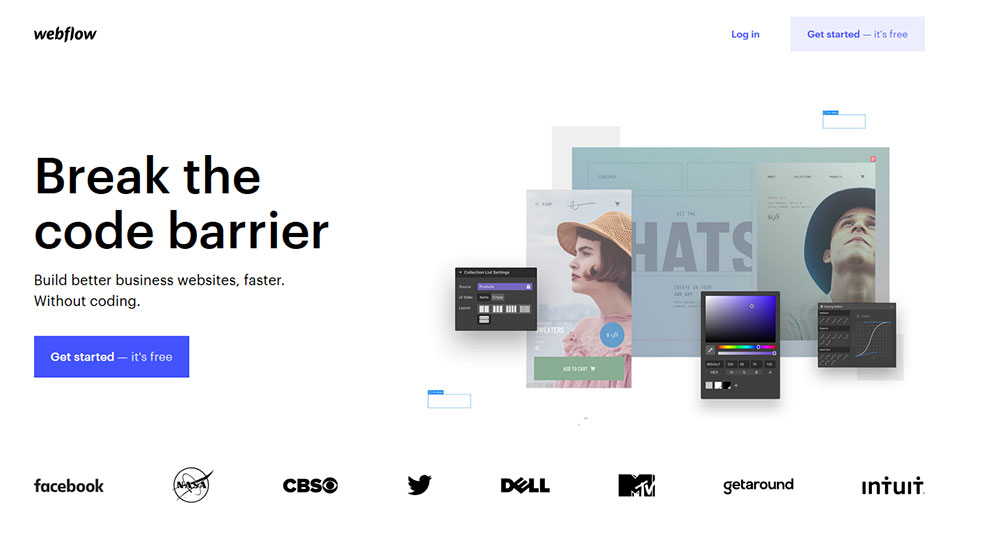
Webflow is a website builder that’s perfect for both amateurs and professionals. It allows you to create websites without using codes, yet you can still customize it depending on your needs. You will also find their templates useful so you don’t have to start your web design from scratch.
When we tested it out, our group didn’t have problems onboarding the platform. The instructions are straightforward and you can build right then and there. But just in case you need some help, their tutorial is tailored-fit for first-timers.
Webflow has this ‘Box Model’. It’s a process where you think of your elements as boxes. Generally, you have your image boxes, text boxes, and button boxes which you can overlay to get that web design you want.
If there is one improvement that we are looking forward to, that would be their personal support. Yes, tutorials are available, but of course, there are questions that are best answered by an actual support team. Webflow’s pricing starts at $35 per month.
2. Carrd
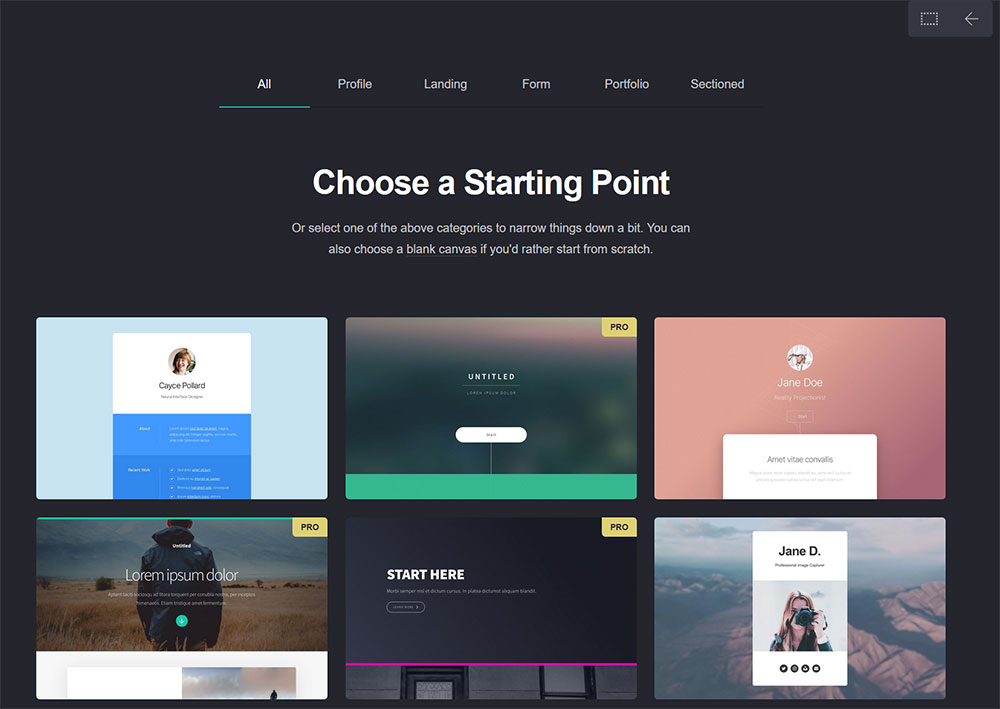
Carrd might be an underdog in the world of website builders, but it sure does a great job. Aside from being user-friendly, the web pages you create from it will load fast. That’s a huge point for them. As for the templates, these are nothing short of amazing. Just some tweaks and you’re all set to go.
We also timed our test, from signing in until we created a live page. Surprisingly, it took us less than an hour.
However, this might not sit well for pros and for e-commerce content. Nevertheless, for a price of $19 per year for their Pro Lite package, this has got to be the cheapest in the market today. Yes, the cost is per year and it isn’t a typo.
3. Wix
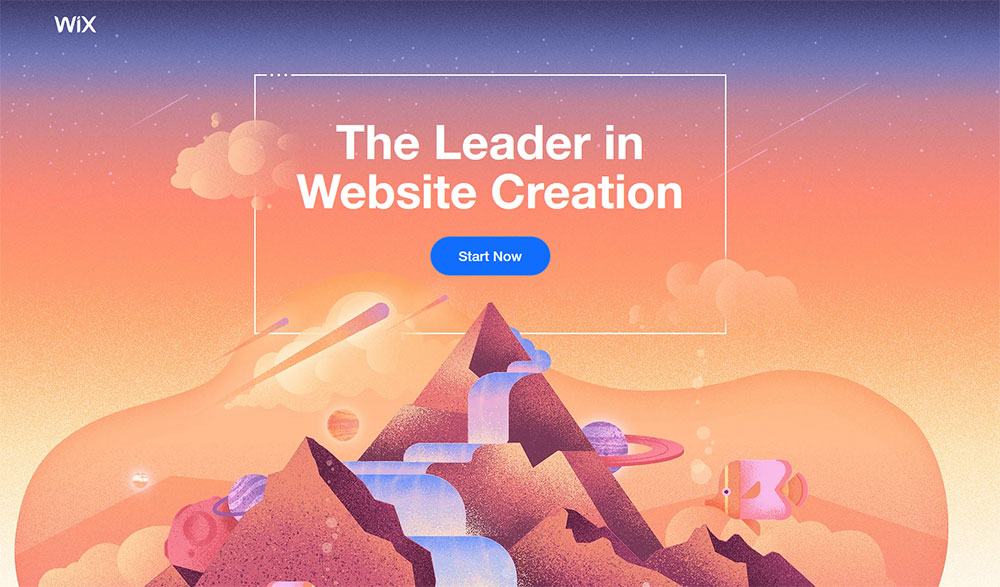
Wix is probably one of the most popular website builders in the list – thanks to their aggressive marketing. But is Wix worth the rave?
It actually is. To date, there are more than 180M users around the globe and that’s a testimony that Wix works. It’s easy to use, yet customizable. In fact, your professional web designers will enjoy it too.
Wix design options are commendable as well. They have a huge library where you can find awesome templates that can instantly give your website that professional look.
Lastly, they have a reliable support team that can answer your concerns, the soonest possible time. Wix has several plans to choose from and starts at $24.50 per month.
4. Squarespace

Included in our best website builders list is Squarespace. This is the right platform if your priority is the visual appearance. Their templates are carefully designed. The main challenge is actually choosing one (because everything seems to be perfect).
If this is your first time to design a website, Squarespace will not intimidate you. Just drag and drop elements, and you are all set. It doesn’t matter if you are building a website for your online store, a non-profit organization, travel, or photography blog. This website builder will surely have something for you.
There is no blank canvas though. But that’s not enough for us to dislike it. You can start with their Personal plan for only $12 per month.
5. Duda
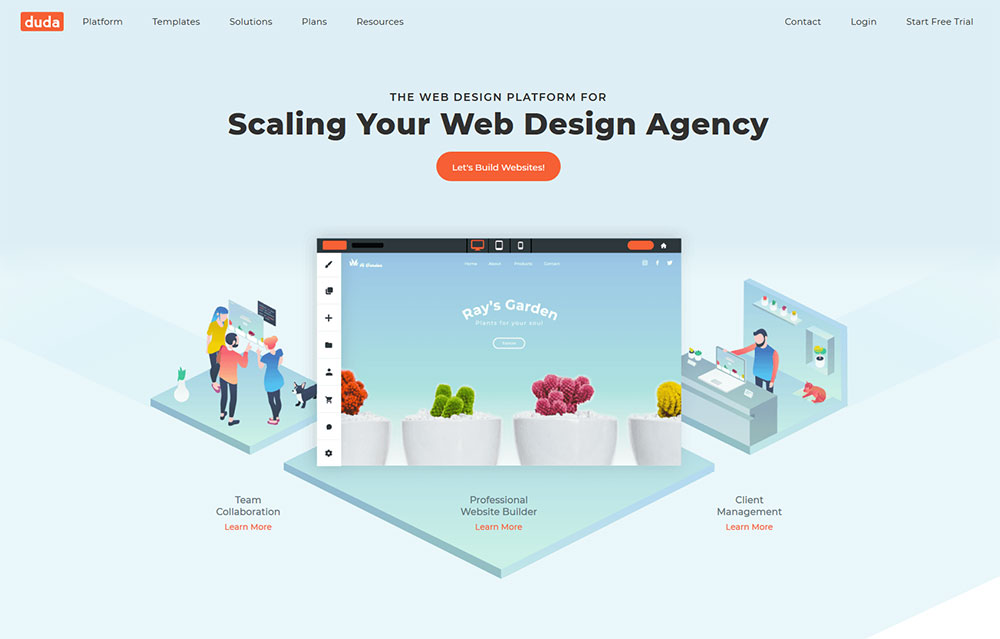
Duda has everything you need for a good website builder plus more. Apart from being user-friendly and having cool templates, it also has a feature where you and your team can easily collaborate. The platform allows you to leave comments on the design and this makes the entire process faster.
One of the downsides of choosing Duda is that their plans are quite costly. Getting their least expensive package for $14 per month is too restricted in our opinion.
6. GoDaddy
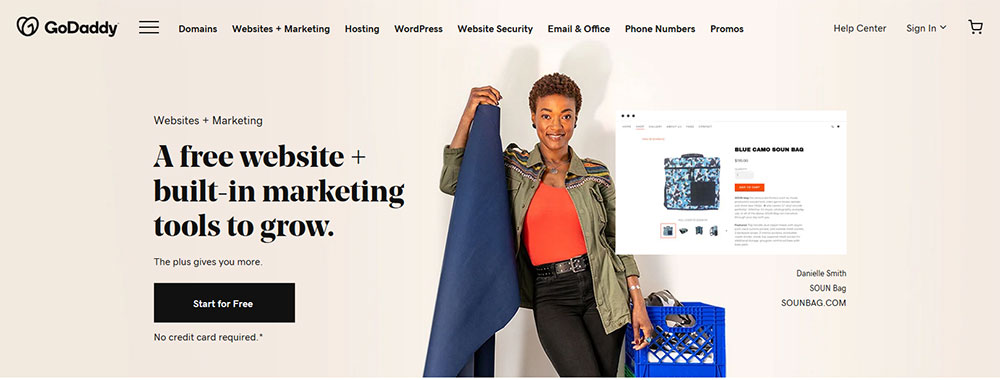
Another website builder that has taken the world by storm is GoDaddy. We’ve already used this platform a couple of years ago, and we have to say that there were a lot of improvements. The designs are now modern, and there are SEO and marketing features that are obviously essential for your website’s success.
Quite frankly, most website builders will promise you the same thing – that you can build a website right away. The same is also true with GoDaddy. But what sets it apart is its customer service. They have 24/7 support through phone, email, and ticketing systems. So basically, it doesn’t matter where you are. If ever you have trouble with your website, just reach out to them and get answers fast. However, if you are looking for a website builder that allows more creative and design freedom, this might not be the best choice.
You can get a package for $10 a month.
7. Ucraft
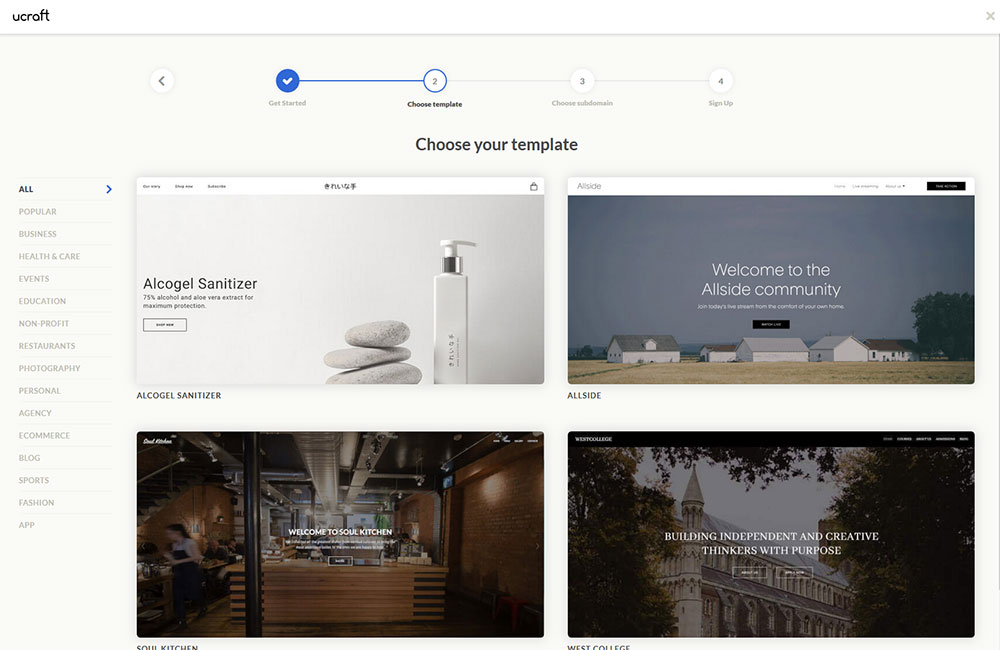
Ucraft isn’t one of the biggest players in the market, but it still deserves to be on our list of the best website builders. You can create your blog, business website, or e-commerce page from this platform. As for the ease-of-use, we have to say that it can be a bit challenging as you cannot move the ‘ready-made blocks’ around your template. It’s as if there is a pre-determined space allotted for these.
What we enjoyed though is the free logo maker. This is ideal for a startup company that has yet to create their brand identity. Their Pro package is $10 per month.
8. Shopify

If you are building an online store, then we could not recommend anything better than Shopify. And right now, it powers more than 800,000 businesses around the world. They have an amazing inventory, tracking, and shipping tools.
This is ideal even if you don’t have an idea about e-commerce design. Everything you need is here. They even have their own payment gateway. The interface is simple and clear so you can start building your online empire whenever you want to.
The Basic Shopify Plan is $29 per month. But as you grow your business, we encourage you to get their higher tiered packages.
9. Weebly
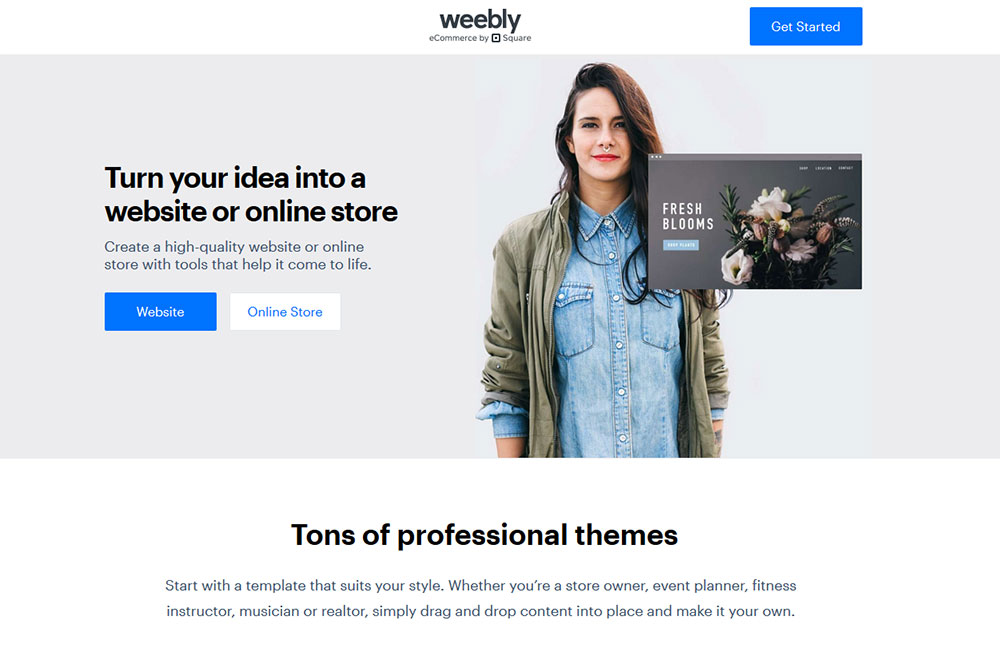
We cannot really say that Weebly is the best website builder. In fact, back in the days, you will find reviews mocking their templates for being below average. They took it to the core and made changes. And we are happy to say, it’s all good now. If they continue making improvements, we will not be surprised if it will get a bigger portion of the market soon.
As of the moment, we can recommend it for small businesses only. You can add advanced site tools if you want. It’s versatile enough not just for beginners but also for pros in web designing.
Their Professional package starts at $12 if you subscribe for one year.
10. Webnode
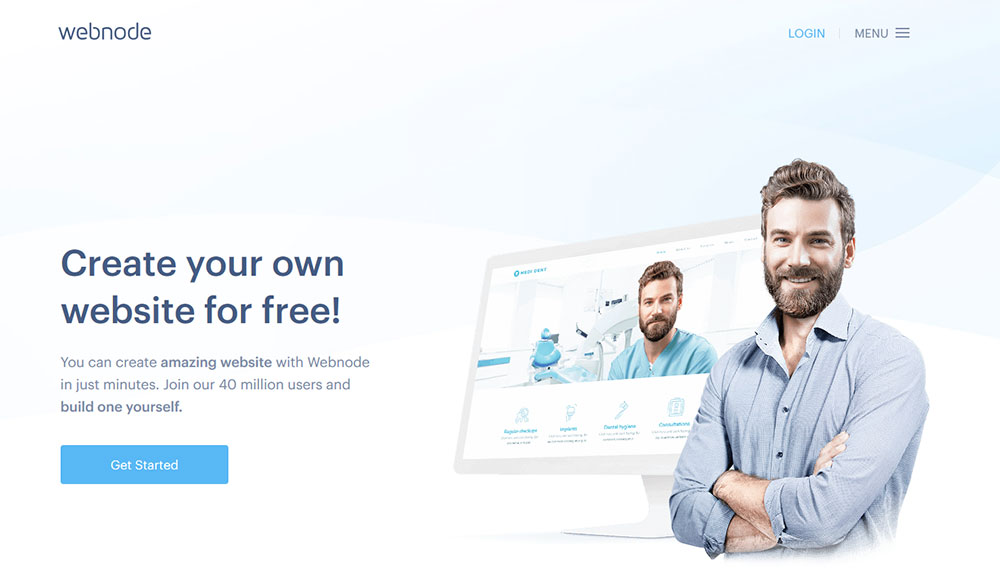
Lastly, we have Webnode, a website builder that supports more than 20 languages. This means you can create a multilingual website. That’s precisely the reason they now have more than 40M registered users. And let’s not forget, it is also great for SEO.
Just recently, they made improvements to their editor and shopping cart features. Nothing’s wrong with the old ones. But seeing that they are proactive in making changes, that’s already a good sign on how they will handle future requirements. As of the moment, this is not the ideal choice for e-commerce websites.
If you want a professional and bilingual website, you can choose their Standard package for only $11.95 per month.
Conclusion
Having a website now brings added value to your business and organization. There’s no reason for you not to have one given the best website builders out there. A quick reminder though. Don’t forget to look at the package’s inclusions. The cheapest one might be too restricted and it would be more practical to get the higher plans. So take your time in understanding the features and then start building your website.
You may like
Business
Top 10 Video Marketing Agencies You Must Check Out in 2026
Published
9 hours agoon
December 19, 2025
If you’ve been following the latest marketing trends, you would know that video marketing is popular. Factors like lower costs, the availability of video platforms, and the rise of social media influencers helped change how consumers interact with video content. Read on to learn the best video marketing agency to help you leverage the power of video.
1. Vireo Video
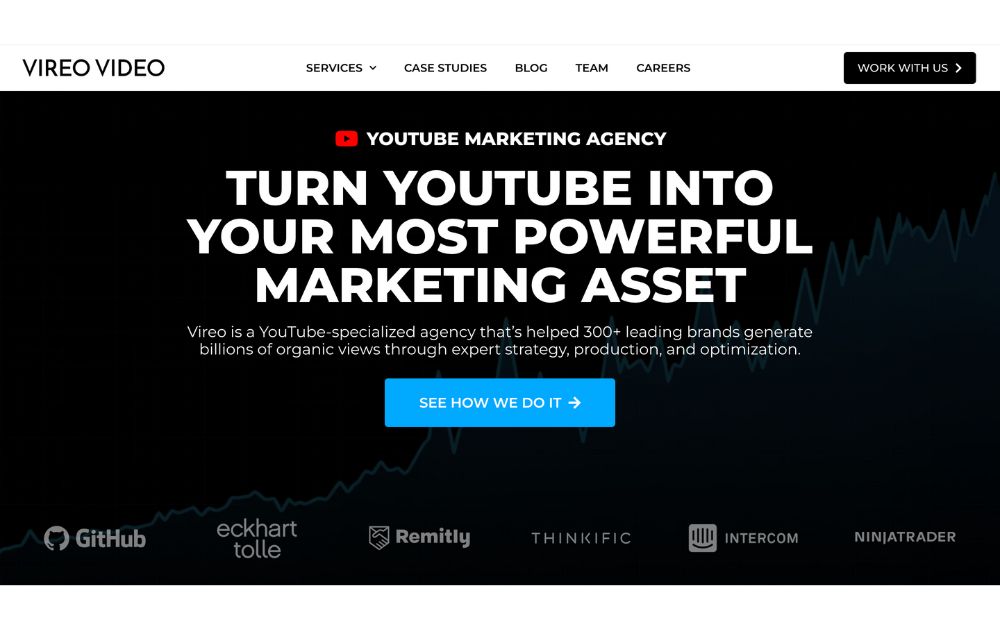
If you need an expert in Youtube marketing, be sure to check the features of Vireo Video. The platform specializes in Youtube marketing and offers various video-related services, such as Youtube content strategy, SEO, and advertising.
Vireo Video is trusted by brands and influencers like bestselling author Eckhart Tolle. Vireo assisted in the optimization of his videos and helped grow his YouTube channel. As a result, his channel has 250 million views and 1.6 million new subscribers.
Key Services:
- Influencer marketing
- Video optimization
- Targeted YouTube advertising placements
- Strategy development
2. NinjaPromo
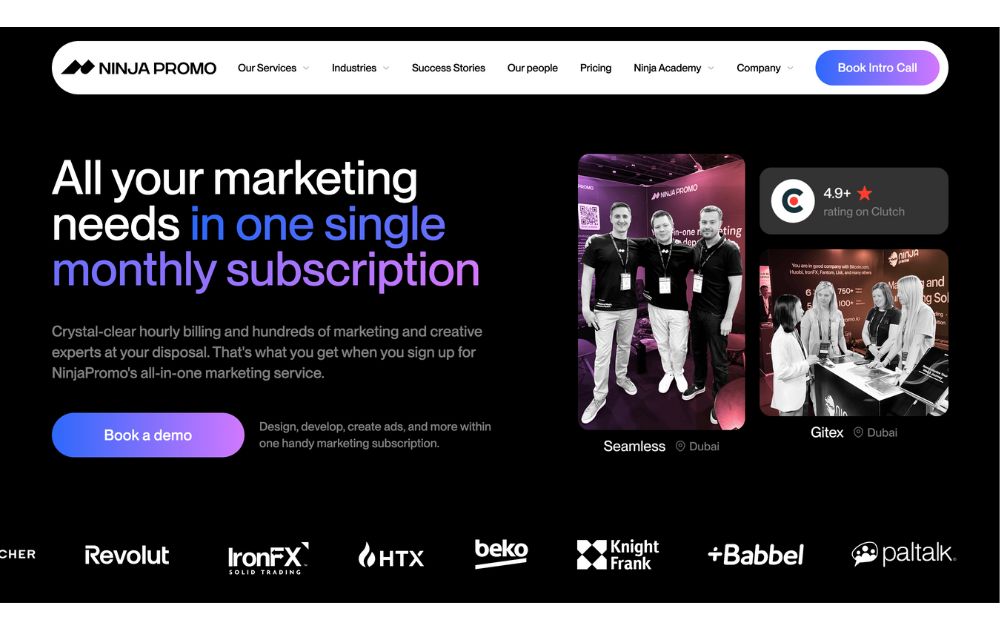
Video marketing is one of the many services offered by the digital marketing agency NinjaPromo. If you’re looking for a perfect partner to assist you in reaching your desired audience quickly, NinjaPromo is one of the best agencies to work with. The company can help you create creative, engaging, and practical videos to promote your brand and increase your online presence.
Key Services:
- Video Production
- Consultation
- SEO optimization
- Explainer videos
- Event and product videos
- Tutorials
3. Moburst
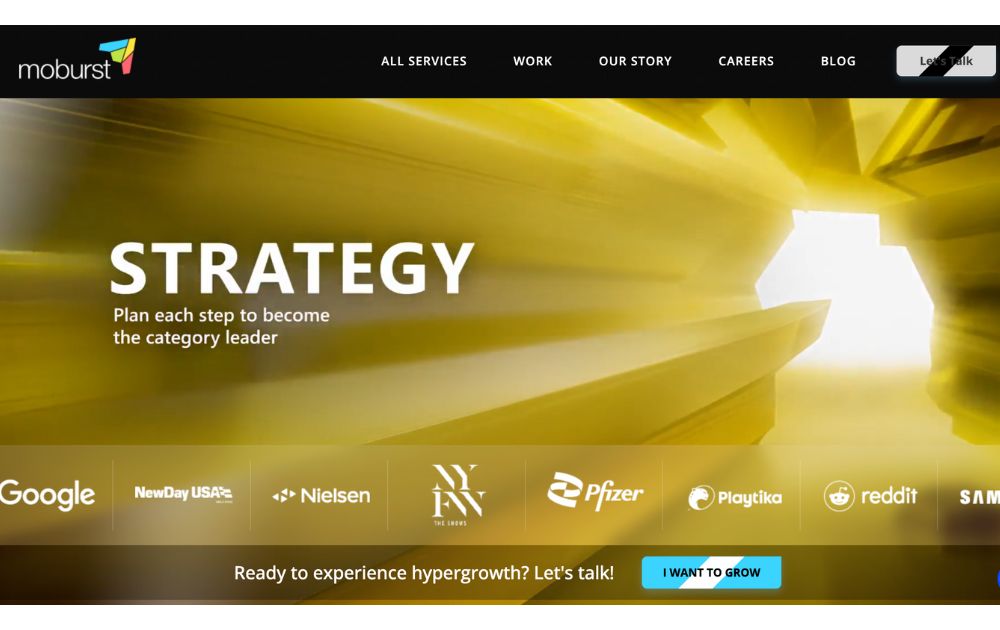
Moburst is a mobile and digital marketing agency that specializes in helping businesses grow their mobile apps. They offer different services to enable enterprises to improve their mobile app performance and increase user engagement. One of its clients is Samsung, which Moburst helped achieve +1,400% growth from downloads to social.
Key Services:
- App Store Optimization
- Video production
- Mobile User Acquisition
- Mobile App Analytics
- Mobile App Design and Development
- Mobile App Retargeting
4. Voy Media
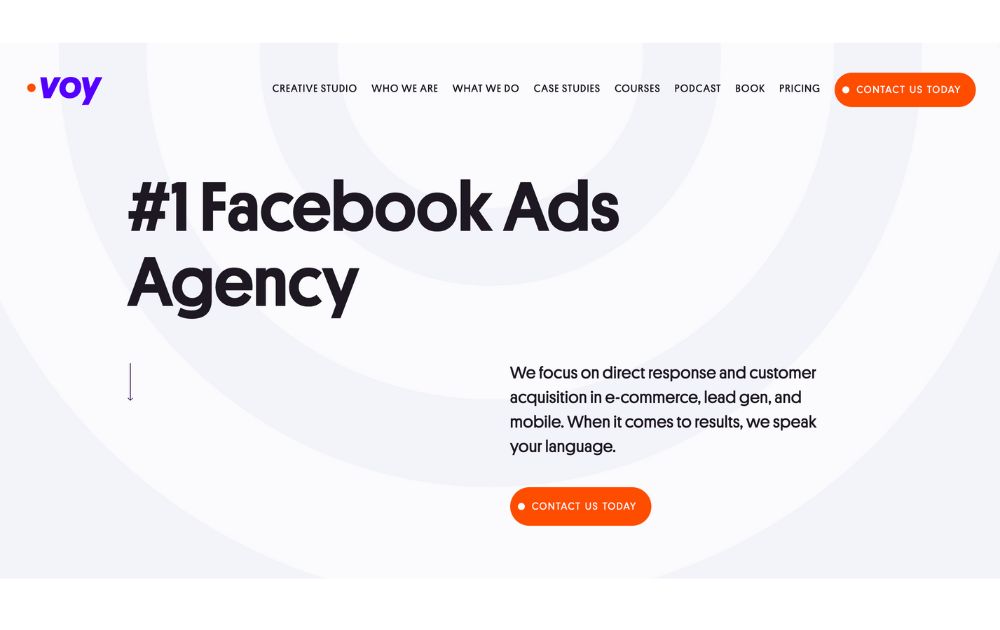
Trusted by big brands like Lacoste, Voy Media is a full-service agency offering various marketing and creative services. Their services are designed to help businesses grow their brand. Likewise, the agency helps them generate leads and increase conversions through social media platforms. Voy Media also ensures its clients receive the necessary support by assigning a dedicated account manager.
Key Services:
- Video editing and production
- Product and lifestyle photography
- Graphic design and illustration
- Full studio production with talent and script
5. Pop Video
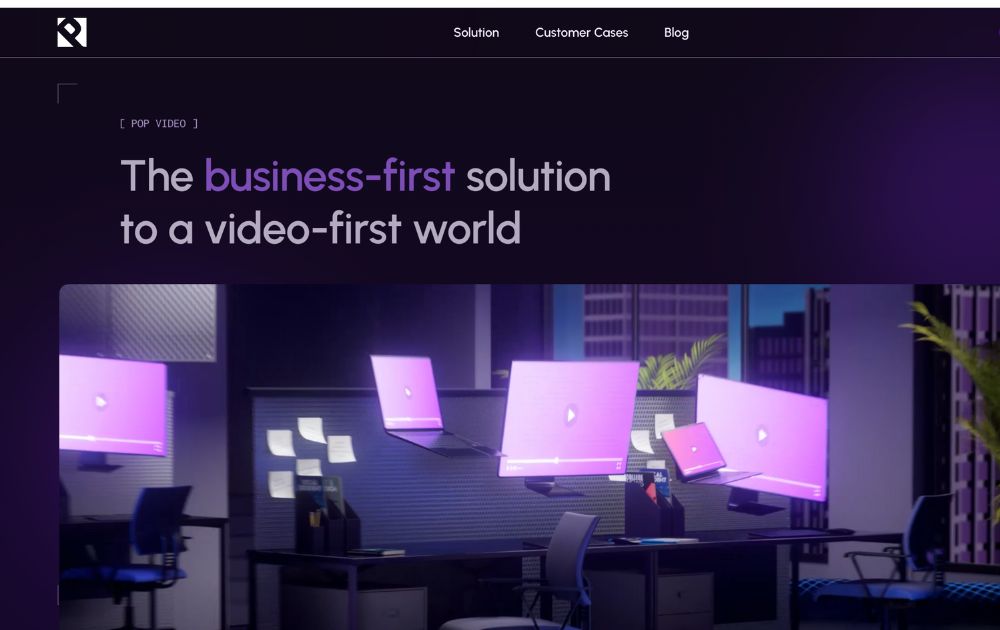
Pop Video was established in 2010 in Houston, Texas. They describe themselves as a business-first solution for a video-first world. Pop Video has a team of visual content creators with a specialization in video production and visual content marketing.
The agency has worked with various clients across different industries, including healthcare, technology, retail, and finance. Some of its notable clients include Microsoft, Adidas, and Coca-Cola.
In addition to its core video production services, Pop Video provides consulting and training services to help businesses develop their video marketing strategies and produce their video content in-house.
Key Services:
- Video Marketing
- Video production
- Animation
- Content creation
- Social media optimization
6. Epipheo

If you need help with educational videos, explore the services of Epipheo. Epipheo is a video marketing agency that creates animated explainer videos and other visual content to assist companies, organizations, and individuals in connecting with their audience effectively.
Key Services:
- Social video ads
- Storytelling testimonial videos
- Animated explainer videos
- Live action videos
- Strategy and consulting
7. Early Light Media

Early Light Video is a full-service video production company that creates high-quality video content for businesses, nonprofits, and individuals. The agency is known for delivering top-notch video content that meets its clients’ needs. It was founded in 2013 by a team of Emmy Award-winning creative directors, with offices in Baltimore and Washington, DC.
Key Services:
- Video production
- Post-production
- Animation
- Voice-over casting
- Music Licensing
8. Indigo Productions
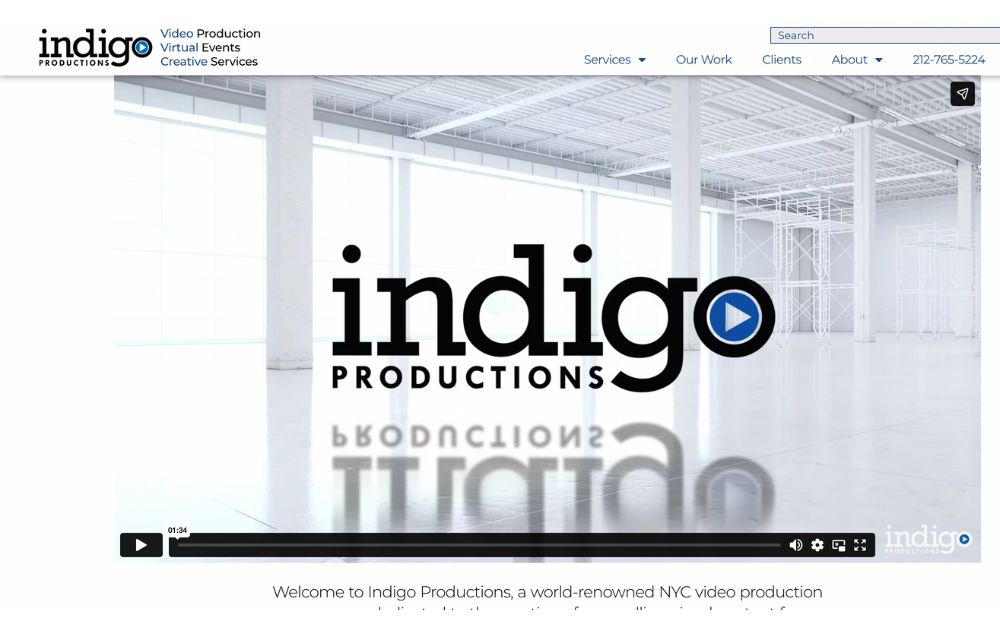
Indigo Productions is a full-service video production company based in New York City. They specialize in creating high-quality videos for corporate clients, advertising agencies, and individuals. Their team of scriptwriters, directors, producers, hair and make-up artists, and location scouts will handle all the logistics.
Key Services:
- Promo videos
- Web commercials
- Music videos
- Movie trailers
- Documentaries
9. LAI Video
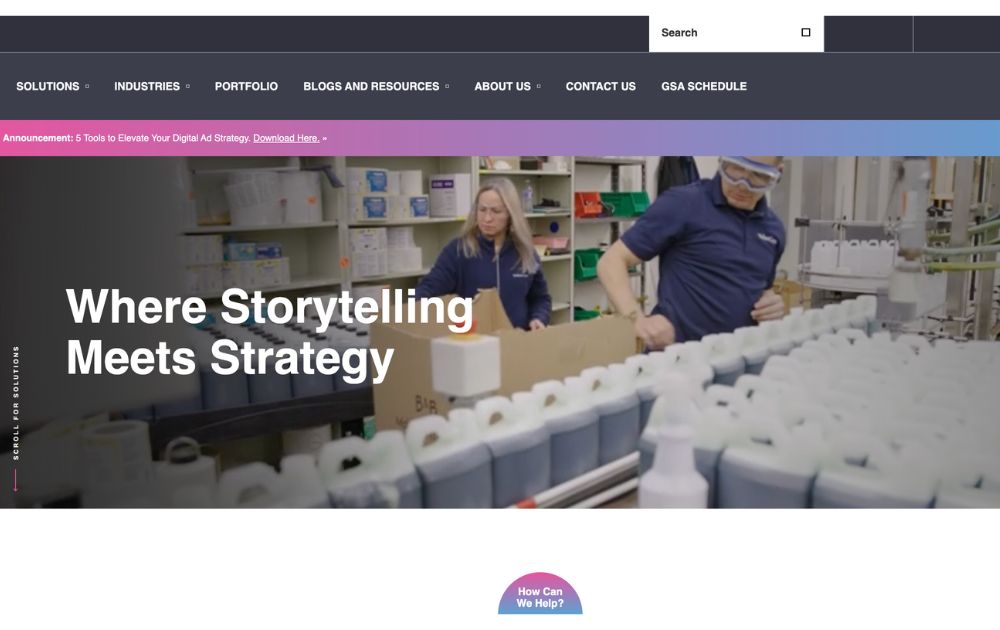
LAI Video is a Washington, DC-based boutique video production company specializing in creating visual stories that inspire and engage audiences. The company was established in 2013 and has become a leading video production agency in the DC metro area.
LAI Video has worked with various clients, including National Geographic, The World Bank, Georgetown University, and The Smithsonian Institution. Their skilled team of filmmakers, animators, editors, and producers works closely with clients to ensure that each video project meets their specific goals and objectives.
Key Services:
- Corporate videos and commercials
- Video communication campaigns
- Branding
- Video animation
- Marketing storytelling
10. SparkHouse

SparkHouse is a video production company based in Minneapolis, Minnesota, specializing in creating high-quality video content for businesses and organizations. The company was founded in 2013 by filmmakers and storytellers passionate about creating visually stunning and emotionally compelling videos.
SparkHouse has worked with various clients, including Target, 3M, Best Buy, and General Mills. Their talented filmmakers, animators, writers, and producers work closely with clients to ensure each video project is customized to their unique needs and objectives.
Key Services:
- Brand Videos
- Corporate Videos
- Animation
- Event Videos
- Social Media Videos
- Documentary Films
Which Types of Videos Do You Get from a Video Marketing Agency?
A video marketing agency typically provides various video types, each with a specific purpose and target audience. Below are the common types of videos you can request from a video marketing agency.
- Brand videos
- Explainer videos
- Corporate videos
- Testimonial videos
- Social media videos
- Live stream videos
- Case studies
- Reviews
- Tutorials
Conclusion
Video marketing is essential for businesses looking to engage their audience, build brand awareness, and drive conversions. That said, the competition will only continue to grow, making working with a reliable video marketing agency more critical than ever.
Featured Image Credit: Photo by fauxels from Pexels

TLDR: Penji is unlimited graphic design for a flat fee; Colab is digital transformation focused on brand storytelling; Jacob Tyler is a full-service brand strategy powerhouse; Micro1 is AI-powered engineering and tech design.
Did you know that California’s creative economy is worth more than $500 billion to the state’s economy? That’s a lot of creative minds at work!
The search for the best design agency in Los Angeles can be quite daunting. After all, 1 in 6 people in L.A. work in a creative field. It’s no surprise there are thousands of candidates that would be an ideal extension of your dream team.
If your business requires a rebrand or continuous graphic design efforts you can rely upon day in and day out, then finding the right design agency will help your business thrive. You need more than just a creator, you need someone to bring your vision to life.
To ease your research, here are the top four contenders as the best graphic design agency in Los Angeles.
1. Penji
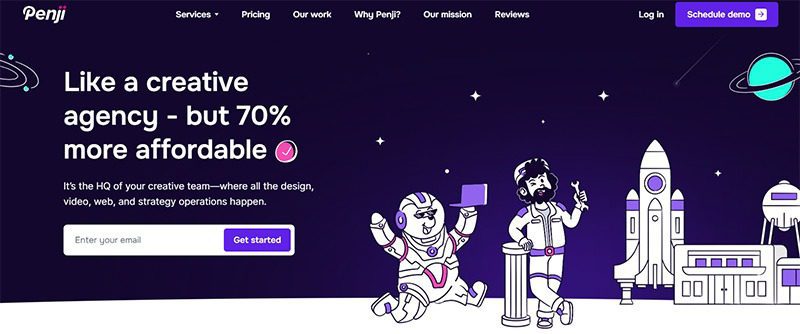
The future of design has arrived. Seeking a design service upon demand? Penji is your new graphic design service that acts as an extension of your team.
No hidden costs, no missed deadlines and For a monthly flat-fee subscription service, you will have access to the top 2% of designers in the world with little more than a submission request for us to take it from there!
This is perfect for marketers or agencies seeking cohesive quality over hiring needs.
Pros:
- Unlimited Revisions: We keep refining until you are 100% happy.
- Flat Monthly Rate: No surprise fees or hourly billing.
- Fast Turnaround: Most drafts are delivered within 24-48 hours.
- Vetted Talent: We hire the top 2% of designers, so you don’t have to vet freelancers.
Cons:
- Subscription-based: This model is best for those with ongoing design needs rather than one-off projects.
2. Colab

When it comes to a design as a service partner with digital transformation as its focus, Colab is the place to be.
A location-based agency that takes a data-led transformational, story-driven approach to seamless UX, Colab is where brands/agencies should go when seeking to merge strategy creation/implementation through execution from start to finish—especially with websites that merge look/functionality with success.
Pros:
- Strategic Focus: They rely heavily on data to drive design decisions.
- Local Expertise: A deep understanding of the LA market.
- Full-Service: They handle everything from the backend code to the frontend visuals.
Cons:
- Higher Cost: As a traditional agency, their project fees will be significantly higher than a subscription model.
- Timeline: Large-scale digital transformation projects can take months to complete.
3. Jacob Tyler

For nearly 20 years, Jacob Tyler has existed in the California Brand Design Agency game as a powerhouse. This full-service digital communications agency will trim the fat from your ultimate brand strategy to hone in on what you truly need moving forward.
If you’re looking for a major professional facelift with omni-channel marketing and integrated deep brand strategy, Jacob Tyler is a heavyweight brand—literally!—who’s worked with everyone from startups to credit unions!
Pros:
- Experience: Over 20 years of experience in the industry.
- Comprehensive: They can handle your entire marketing funnel, not just the design.
- Award-Winning: A strong portfolio of successful, high-profile campaigns.
Cons:
- Project Minimums: They typically work with project budgets starting at $10k+, which may price out smaller startups.
- Complexity: Their comprehensive approach might be overkill if you just need graphic design execution.
4. Micro1

Micro1 takes creative human design efforts and merges them with AI functionality. As a critical graphic design agency, they use artificial intelligence for beauty and brains on websites/apps like never seen before!
Micro1 builds engineering teams behind major apps (think Tinder, Uber…) so if you’re a tech-based startup in need of cutting edge product development based on extraordinary UX/UI look no further!
Pros:
- Tech-Forward: Ideal for SaaS and app-based companies.
- AI Integration: Uses AI to enhance efficiency and speed.
- Scalable: Great for ambitious startups looking to grow their engineering and design capabilities simultaneously.
Cons:
- Niche Focus: They are heavily focused on product and app development, rather than general marketing graphics.
- Development Heavy: If you don’t need coding or software engineering, their full suite of services might not apply to you.
Credit for Cover image: Photo by Mikael Blomkvist on Pexels
Business
What’s the Best Graphic Design Service for Ongoing Marketing?
Published
2 days agoon
December 17, 2025
One constant part of managing a business is marketing: it’s a never-ending process. So, if you need a steady supply of social media posts, ad campaigns, and other visuals, you need to work with a reliable graphic design subscription service. Here are our top five:
1. Penji

Who doesn’t want unlimited graphic design for a fixed monthly fee? Penji offers plans with unlimited revisions, access to a team of design experts, fast turnaround times, and cost-effective pricing. This is the best option for business owners, marketers, agencies, and internal teams to get social media graphics, custom illustrations, logos, web and app designs, and many more.
2. Flocksy
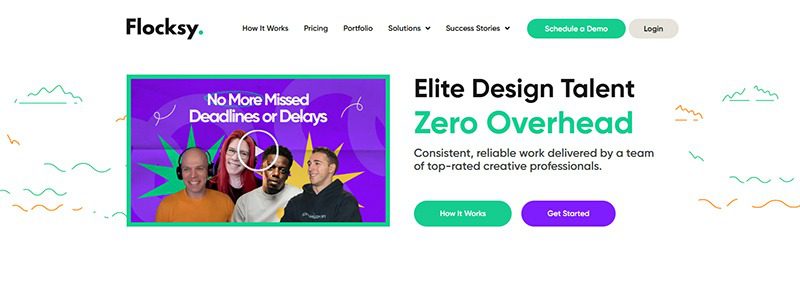
Next, having a dedicated team of creatives without worrying about overhead expenses makes Flocksy an excellent design solution for marketers. Like Penji, it offers flat-rate pricing that’s predictable and suitable for businesses of all sizes. It provides graphic design services, video editing, motion graphics, and more.
3. Designity

Offering you the guidance of a US-based creative director, Designity is a graphic design service platform that’s ideal for modern businesses. It can provide you with a wide range of services, including motion graphics, videos, digital ads, social media graphics, and mobile app design and coding, among others.
4. ManyPixels

With a fast turnaround time for their unlimited design requests, ManyPixels is another reliable creative service platform for marketers. It provides ongoing support for your marketing efforts, including branding, illustrations, social media posts, print design, and video editing, to name a few.
5. Superside
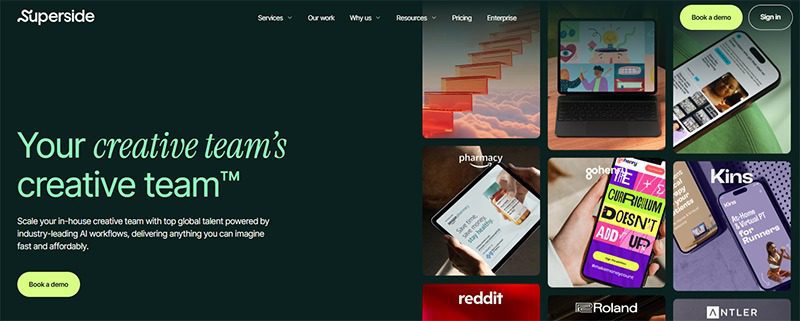
Another creative-as-a-service platform, Superside, suits every size business and marketing team. It is ideal for those with high-volume design needs and a larger enterprise marketing network. You can get a wide array of graphic design services, including ad creatives, branding services, illustrations, and even eBooks and report designs.

Top 10 Video Marketing Agencies You Must Check Out in 2026
Casino mobile apps

The Top 8 Webinar Platforms For Your Next Virtual Event or Demo
Hash casino
Bizzo casino deposit bonus
Geheime casino tricks de erfahrung
Casino nikolsburg erfahrungen

Top 10 Presentation Software To Use in 2026

Top 10 Video Marketing Agencies You Must Check Out in 2026

Top 10 Social Media Scheduler Apps to Automate Your Postings

How Marketing Optimization Tools Level Up Your Marketing Game

The Top 8 Webinar Platforms For Your Next Virtual Event or Demo

What’s the Best Unlimited Graphic Design Subscription Platform?
Pinco Casino — a dominant platform throughout the 2025–2026 casino market in Canada
Trending
- Business9 hours ago
Top 10 Video Marketing Agencies You Must Check Out in 2026
- Technology11 hours ago
The Top 8 Webinar Platforms For Your Next Virtual Event or Demo
- Uncategorized4 days ago
BDMBet Sito web ufficiale 450 di bonus + 250 giri gratis
- cresuscasino3 days ago
Cadoola casino review
- azurcasino3 days ago
888 casino willkommensbonus
- Business2 days ago
What’s the Best Design Agency in Chicago
- cresuscasino3 days ago
Casino 400
- cresuscasino2 days ago
Casino chateaufarine
- leonbetcasino2 days ago
Essence geant casino annemasse
- leonbetcasino2 days ago
Doubledown casino free chips bonus collector




